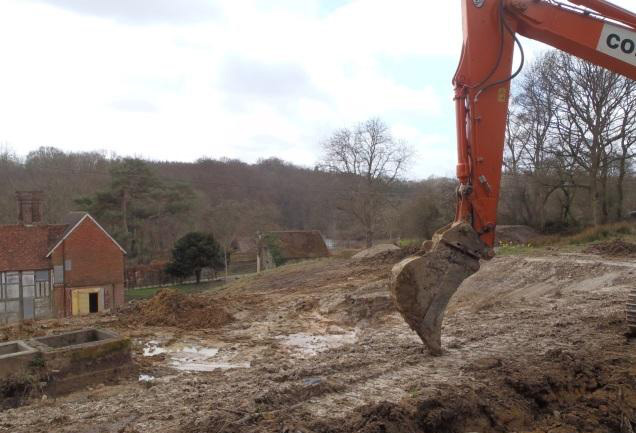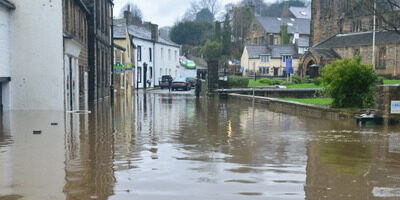Groundwater Flood Risk: Sale of an 18th Century Property
We were commissioned to undertake a FloodSmart GW Plus Report to investigate the cause of groundwater ingress on the site of a large eighteenth-century house. The client required pragmatic advice to implement mitigation measures during the renovation and extension of their property into a hill slope. The property was to be advertised on the property market and the homeowner required confidence that groundwater flooding issues would not arise during the sale.
Our client required clear and pragmatic advice on historical groundwater flooding at their property. After an initial site visit, the geology and hydrogeology of the site was assessed. This revealed that the site was located upon a boundary between a sandstone aquifer and an underlying clay formation which promoted lateral groundwater flow.
Benching into the hill slope had been undertaken historically and was extended during the site works as a means to provide platforms upon which the building extension would be founded. Groundwater ingress created difficult working conditions.
Temporary measures were required to improve the site drainage conditions and presentation of the development plot for marketing purposes. Drainage blankets and shallow French drains around the perimeter of the area were proposed as a means to improve site drainage immediately.
Due to evident signs of slope failure and slumping, recommendations were made to improve terracing and slope stability.
Client Benefit
Our client was provided with clear advice on the best methodology to present the development site to achieve the best value for a piece of valuable real estate. This included recommendations to undertake more detailed site investigations with the objective of improving the conceptual understanding of the site and the requirement for further mitigations measures that would be required in the long-term.
Recommendations were made to improve uncontrolled filling at the site and to give due consideration (when constructing) to relic slip planes which had been identified during the site walkover. Due consideration was also given to potential temporary dewatering measures required for the future decommissioning of groundwater wells at the site.




